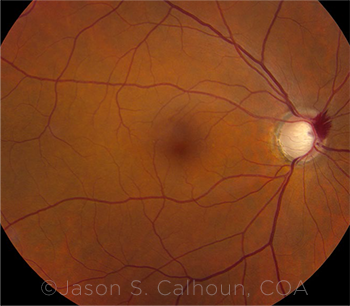Download PDF
Despite decades of progress in glaucoma research as well as the advent of novel imaging technologies and surgical interventions, undetected glaucoma remains highly prevalent worldwide. There were an estimated 43 million cases of undetected primary open-angle glaucoma (POAG) in 2020—and this number is projected to rise to 67 million by 2040.1
To look more deeply into these statistics, researchers in Singapore and Boston reviewed 61 articles from 55 population-based epidemiological studies published between Jan. 1, 1990, and June 1, 2020. The studies involved 189,359 participants; of these, 6,949 had manifest glaucoma, and 5,558 had undetected disease prior to diagnosis in the respective study.
 |
UNDETECTED? In every region of the world, at least half of all POAG cases were undetected, the meta-analysis found.
|
A global problem. A meta-analysis of data by country of origin revealed that the average proportion of undetected cases in each geographical region varies significantly. Africa, for example, had the highest proportion (94%), whereas Oceania had the lowest (59%).
A second analysis, based on each country’s human development index (HDI), found that the proportion of previously undetected cases was above 90% in countries with a low HDI. That proportion fell to the 70% range in countries with medium to very high socioeconomic development.
The finding that 7 of 10 cases of glaucoma were undetected on average in developed countries was a surprise, said Ching-Yu Cheng, MD, PhD, at the Singapore Eye Research Institute. “Glaucoma detection is not just a problem in countries with low development.”
Regional variations. Africa and Asia had higher odds of undetected glaucoma, compared to Europe. (Differences between other regions and Europe were insignificant.) By 2040, the largest increase (86.3%) is projected for Africa, although Asia, by sheer population numbers, will account for 58.4% of all undetected POAG.
Need for education. “We ended our paper with a call to action,” said Dr. Cheng. He suggested a number of potential educational initiatives to improve glaucoma awareness and detection—and he encouraged clinicians to move ahead without waiting for formal initiatives. “Start advocating the importance of regular eye checks to the general public. And start checking for glaucoma in your next patient.”
—Miriam Karmel
___________________________
1 Soh ZD et al. Ophthalmology. Published online April 15, 2021.
___________________________
Relevant financial disclosures—Dr. Cheng: Singapore National Medical Research Council: S.
For full disclosures and the disclosure key, see below.
Full Financial Disclosures
Dr. Cheng Singapore National Medical Research Council: S.
Dr. Jeng EyeGate Pharmaceuticals: O; GlaxoSmithKline: C; Kedrion: C; Merck: C; Sanofi: C; Santen: C.
Dr. Kaiser Aerie: C; Aerpio: C; Allegro: C; Allergan: C; Bayer Healthcare Pharmaceuticals: C,L; Biogen: C; Boehringer Ingelheim: C; Clearside: C; Eyevensys: C; Formycon: C; Galecto: C; Galimedix: C; Genentech: C; Glaukos: C; iRenix: C; Iveric Bio: C,O; jCyte: C; kala: C; Kanghong: C; Kodiak: C; Novartis: C,L; Omeros: C; Opthea: C; Oxurion: C; Regeneron: C,L; RegenxBio: C; Retinal Sciences: C,O; Santen: C; Stealth: C; Verana: O.
Dr. Phylactou None.
Disclosure Category
|
Code
|
Description
|
| Consultant/Advisor |
C |
Consultant fee, paid advisory boards, or fees for attending a meeting. |
| Employee |
E |
Employed by a commercial company. |
| Speakers bureau |
L |
Lecture fees or honoraria, travel fees or reimbursements when speaking at the invitation of a commercial company. |
| Equity owner |
O |
Equity ownership/stock options in publicly or privately traded firms, excluding mutual funds. |
| Patents/Royalty |
P |
Patents and/or royalties for intellectual property. |
| Grant support |
S |
Grant support or other financial support to the investigator from all sources, including research support from government agencies (e.g., NIH), foundations, device manufacturers, and/or pharmaceutical companies. |
|
More from this month’s News in Review